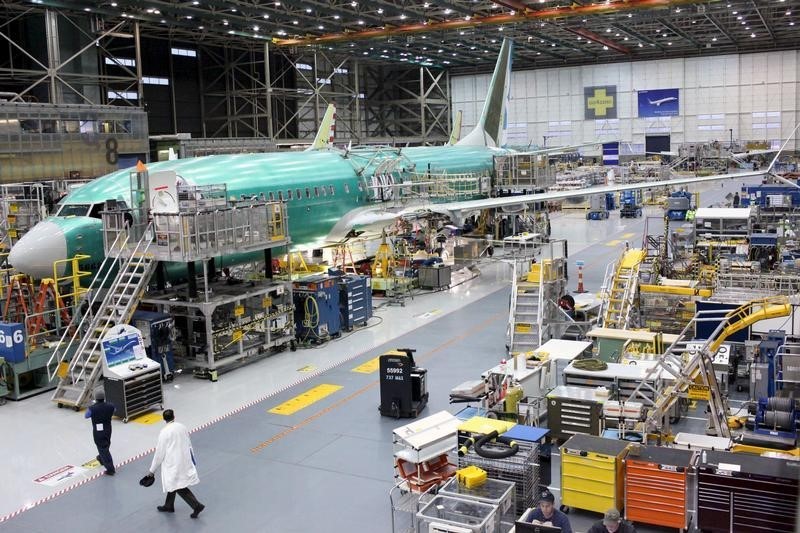This post was originally published on this site
https://i-invdn-com.investing.com/trkd-images/LYNXMPEI9P0ES_L.jpg
(Reuters) -Boeing Co’s ailing defense unit on Wednesday recorded a $2.8 billion charge, but the U.S. planemaker stuck to its forecast of generating cash this year despite struggling to raise commercial jet production due to labor and supply shortages.
Shares tumbled 4% after the results as cost overruns in Boeing (NYSE:BA)’s defense, space and security segment have hobbled a recovery for the company attempting to come out of successive crises by cashing in on rising air travel demand.
Both Boeing and its European rival Airbus SE (OTC:EADSY) have ramped up production of narrowbody jets, with Boeing delivering 112 jets in the third quarter compared to 85 jets last year.
That helped it generate a free cash flow of $2.9 billion in the quarter. It had recorded a cash burn of $507 million in the same period a year ago.
However, rising cost pressures over the last few months have hampered fixed-price contracts for U.S. aerospace and defense firms, prompting an industry body to ask the U.S. Congress for inflationary relief.
The planemaker said it took charges on its VC-25B program, commonly known as Air Force One, as well as on the KC-46A refueling tanker program, among others.
“Our revenue and earnings were significantly impacted by losses on fixed-price development programs in our defense business, driven by higher estimated manufacturing and supply chain costs,” Boeing Chief Executive Dave Calhoun said in a message to employees.
The company has appointed a senior troubleshooter Steve Parker to help turn around loss-making programs in its defense unit, Reuters reported on Tuesday.
On the commercial side, Boeing handed over 86 MAX jets in the quarter, or about 29 a month, according to company data. It needs to deliver roughly 44 jets per month in the fourth quarter to meet its 737 MAX delivery target of “low 400s” this year.
“We’ve also added more than 10,000 employees this year and are investing in their training and development to accelerate the experience curve and improve productivity,” Calhoun said.
“Within our production facilities, we’re not pushing the system too fast,” he said, underscoring the challenging environment for the aerospace industry.
The sector is facing persistent supply shortages, particularly of workers and castings, though General Electric (NYSE:GE) Co said on Tuesday it was seeing early signs of some supply challenges easing.
Third-quarter revenue rose 4% to $15.96 billion, but adjusted loss per share widened to $6.18 from $0.60 a year ago.
Demand at the global services business that provides spare parts and services such as jet conversions was a bright spot in the quarter through September, with revenue rising 5%.

